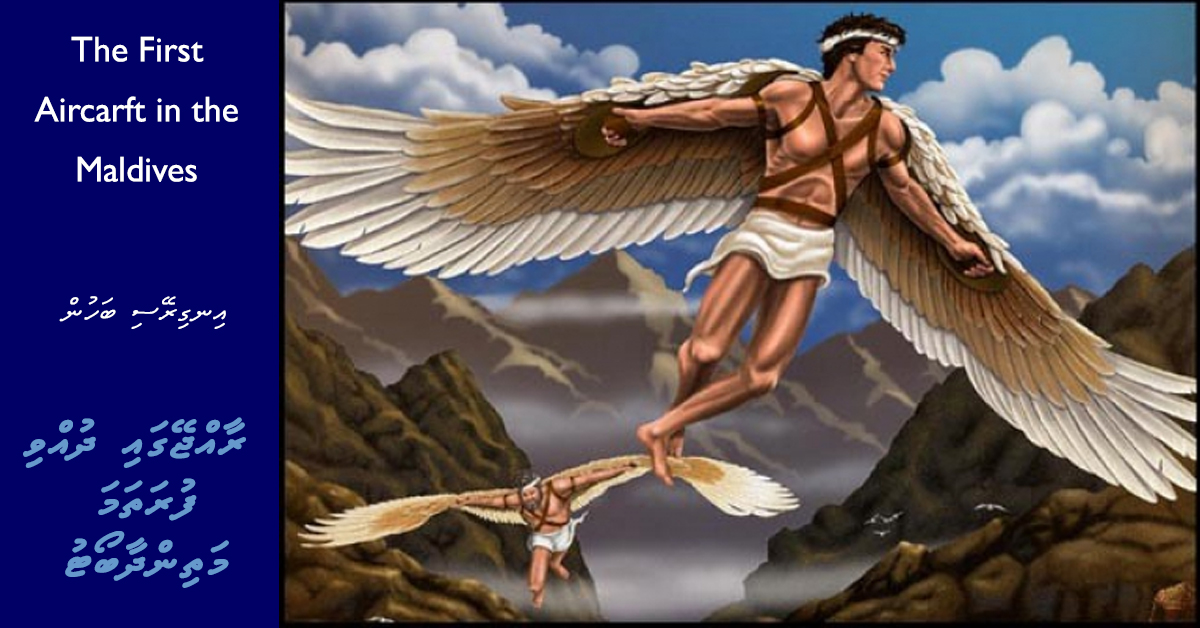
The Discovery of Flight and the first Aeroplane in the Maldives
Early attempts at flying
Anyone who had seen a bird flying freely in the air would have been fascinated by flight. Throughout history, many would have studied birds and attempted to emulate their flight. One of the earliest accounts of the emulation of bird flight is from Greek mythology. According to the legend, Daedalus, an Athenian craftsman of great skill living in Crete was imprisoned with his son, Icarus, in a place high above ground overlooking the sea. In order to escape, Daedalus fashioned two pairs of wings. They were made from fallen sea-bird feathers fixed to a wooden framework using wax. Before the escape, Daedalus warned Icarus not to get close to the sun in case the wax softens due to heat and the feathers fall off. They set off from their prison, father and son, together. However, Icarus, overcome by the exhilaration of flight, forgot his father’s advice, got closer to the sun, and his feathers fell off. Thus, Icarus fell from the sky, and he was swallowed by the swelling sea below. The sea he fell into is, today, called Icarian sea and the island close to it is known as Ikaria.
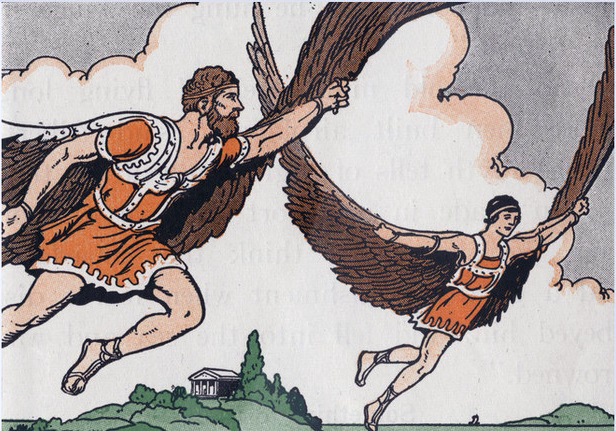
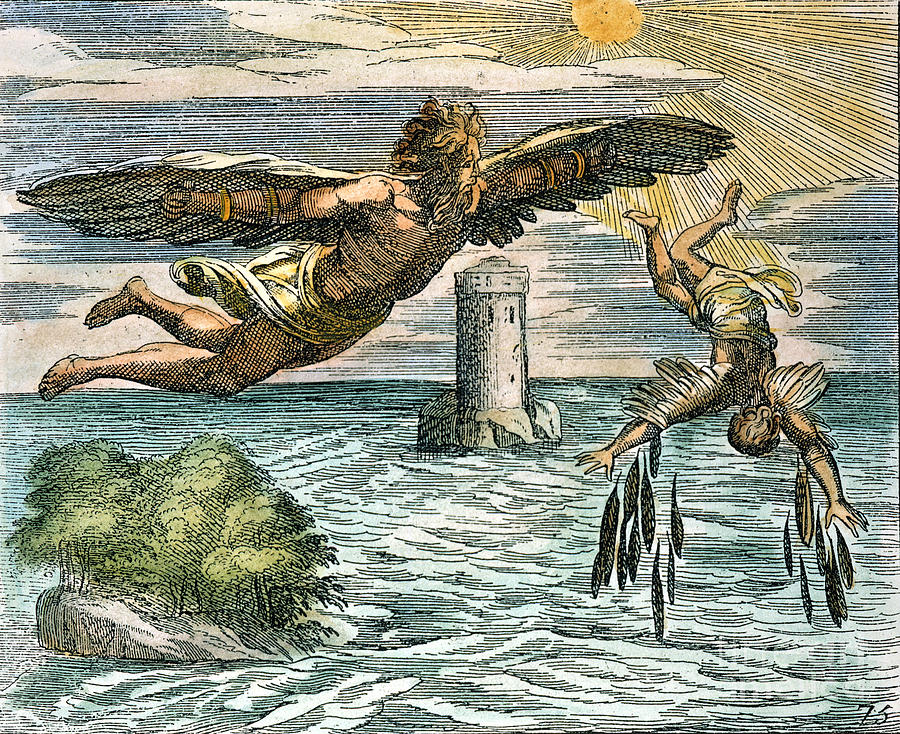
Apart from the moral of the story about the dangers of disregarding the wisdom of elders and the folly of the hubris of youth, many people who heard it would have wondered whether the means of escape could be possible. We know that within the atmosphere, going higher would actually decrease the temperature. For a person weighing about 62 kg (average human weight) the wingspan required would be about 6 metres. With artificial wings, one can safely escape from a high point, especially with a favourable headwind. Due to the power required, it may not be possible to climb but gliding to a distance is certainly achievable. Indeed, in the history of mankind, many would have tried with varying degrees of success.
An early attempt at gliding from a high point took place in Cordoba, Spain in 875 CE. Inspired by the sight of a man who glided down from a minaret using a suit of silk reinforced with wooden rods, Abbas ibn Firnas (Arabic: عباس بن فرناس), a polymath of the same standing as the fabled Daedalus, attempted to do the same. He constructed a pair of wings out of silk and wood with actual feathers sewn in. From the hills of Jabal Al-‘Arus he jumped off a cliff and, according to some writers, glided for sometime. Eilmer of Malmesbury was a monk who attempted the same feat and broke his legs in the process, some 200 years later.
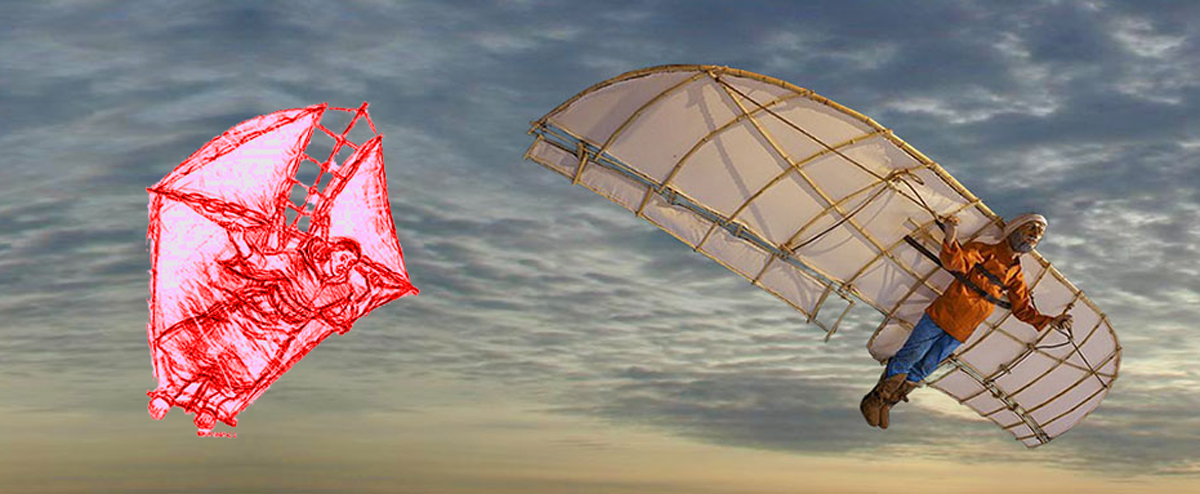
Another well-known early attempt to fly was by a Turk, Hezârfen Ahmed Çelebi who was a polymath as well. His title, hazaaru means 1000, and fannu is skills in Persian. A historian of the period (1630–1632) states that “First, he practiced by flying over the pulpit of Okmeydanı eight or nine times with eagle wings, using the force of the wind. Then, as Sultan Murad Khan (Murad IV) was watching from the Sinan Pasha mansion at Sarayburnu, he flew from the very top of the Galata Tower and landed in the Doğancılar Square in Üsküdar, with the help of the south-west wind. Then Murad Khan granted him a sack of golden coins, and said: “This is a scary man. He is capable of doing anything he wishes. It is not right to keep such people,” and thus sent him to Algeria on exile. He died there.”
The flight is across Bhosphorus sea (a distance of 3.4 km), and the height difference is about 77 metres. This distance can be glided across, especially with a good wind, and thus seems possible.
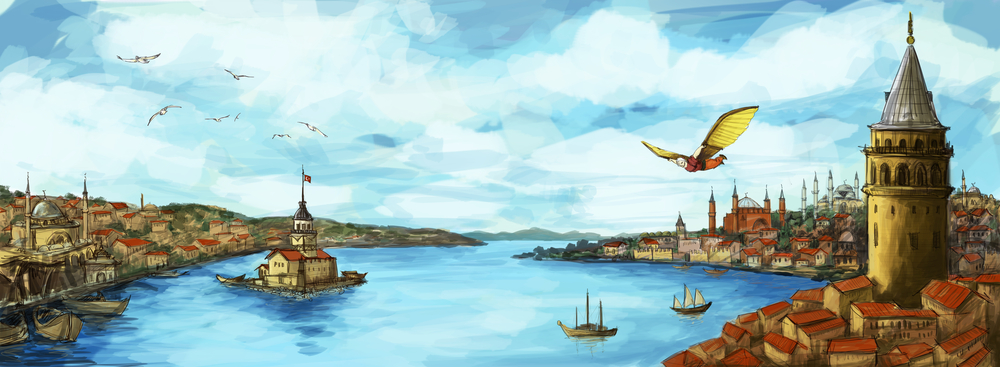
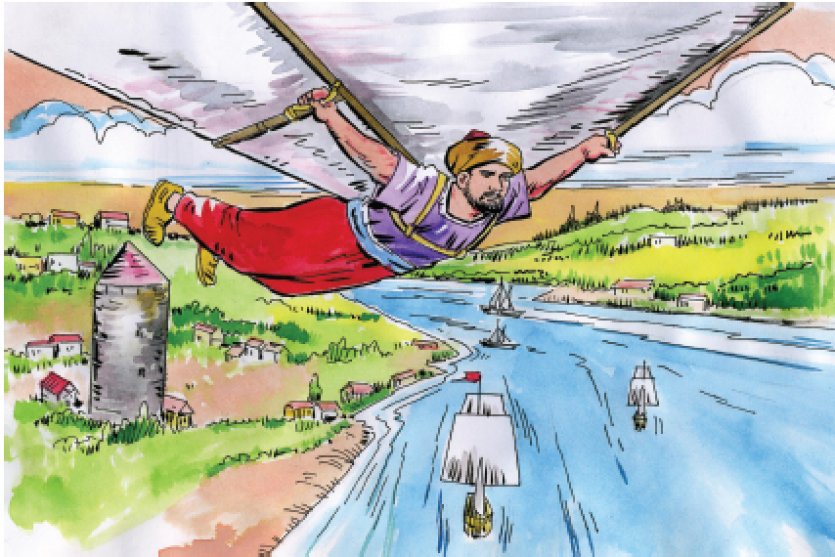
The records of early attempts of flying are sketchy and all drawings are artists’ impressions. The invention of photography, the availability of paper and widespread literacy made late records more reliable. Perhaps, the most successful of aviators of gliding was Otto Lilienthal (23 May 1848 – 10 August 1896), a German. He built several gliders and made over 1000 flights. He sold gliders made in his factory. Records of his endeavours were published in newspapers in several countries as publishing was widespread at the time. His demonstrations of flight convinced people that human flight was possible.
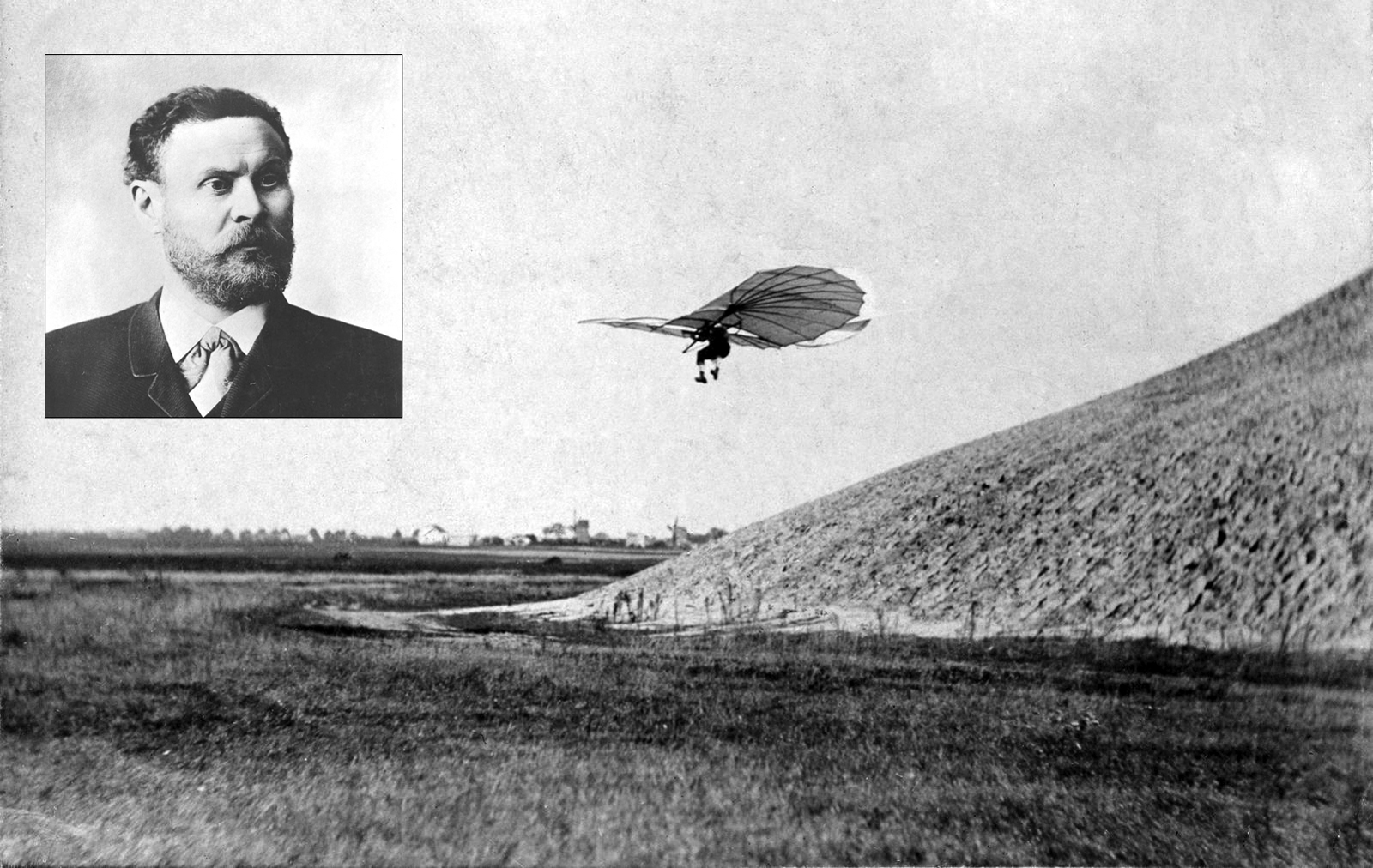
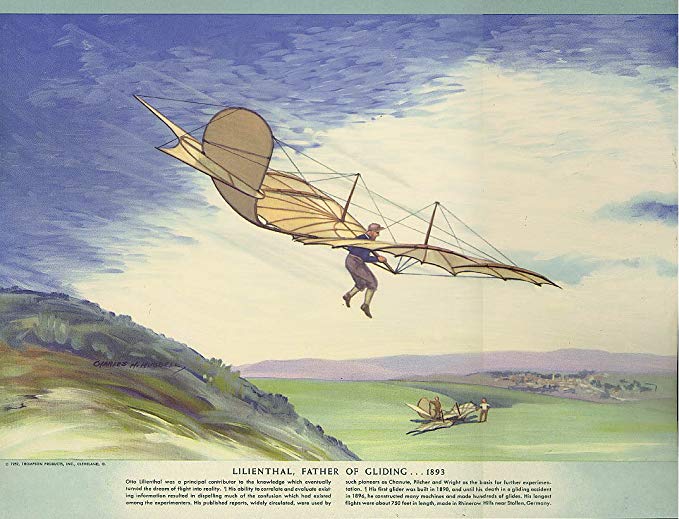
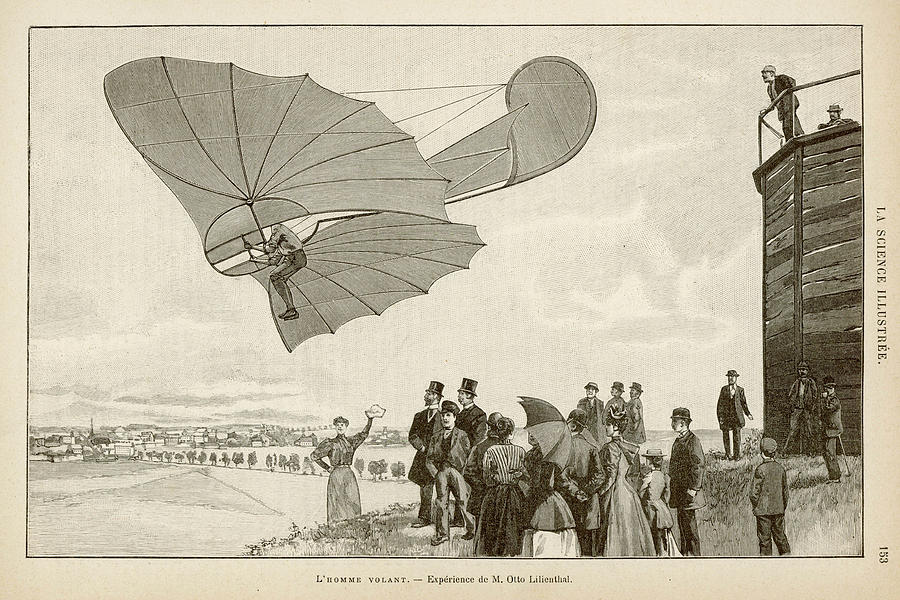
The First Aircraft
A German machinist who worked for Otto Lilienthal was Gustav Weißkopf, son of a bridge-construction engineer. When Gustave was 13 years old his mother died. In 1890, three years after his mother died, he left his hometown and after a series of adventures arrived in USA in 1893. He Anglicized his name to Gustave Whitehead and started work on building gliders and engines. Early in 1901, Whitehead had built his 21st manned aircraft and that year – more than two years before the Wright Brothers – he made history’s first manned, powered, controlled, sustained flight in a heavier-than-air aircraft. “Jane’s All the World’s Aircraft”, the world’s foremost authority on aircraft, formally recognized Gustave Whitehead as inventor of aeroplane on 8th March 2013. Whitehead retained his German citizenship throughout his life and never became a US naturalized citizen. The story is detailed in Gustave Whitehead and the Wright Brothers (ISBN: 9781532899393). Smithsonian Museum historians made a deal for the Wright’s plane which they bought for $1 in 1948. They are required to claim that the Wright brothers invented the plane by the agreement (widely available) of the purchase.
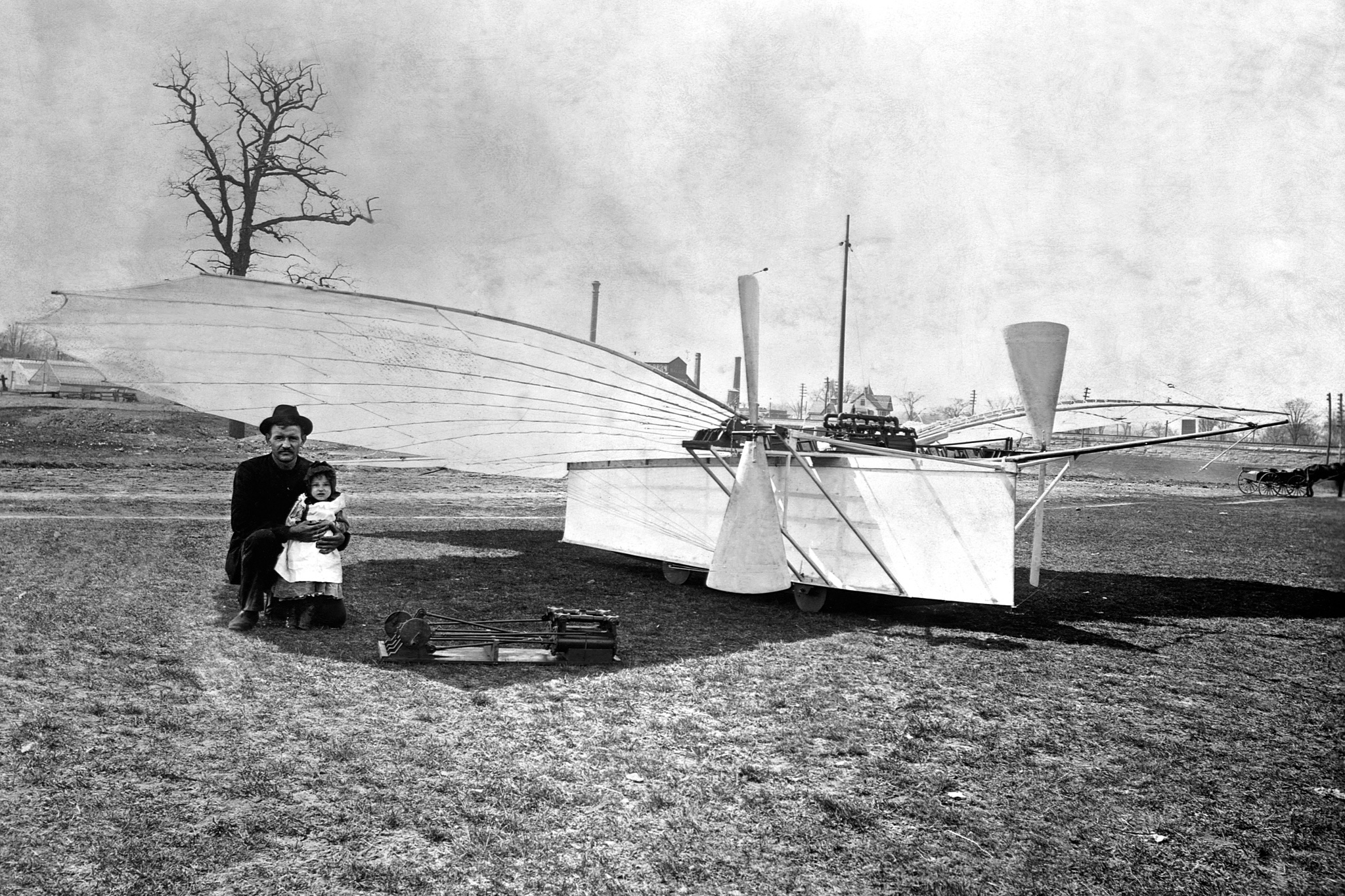
Perhaps, the major contribution of the Wright brothers was in commercializing the aircraft as a means for transport and warfare. By 1907, six years after the first powered flight, Wright’s Model A aircraft was for sale —more than 50 approved versions were built in Germany alone. There were other European designs of aircraft. The most famous of Europeans designs is the one designed and flown by a Brazilian resident in France — Santos-Dumont. Some people even consider him as the inventor of the aircraft after flying his number 14bis in Europe for the first time. Serial numbers before that referred to balloons and airships. His most successful was Demoiselle no. 20 which was produced in numbers and sold. By this time, there had been other builders of aircraft both in France and the US. In August 1908, Wilbur Wright brought his Flyer to France and made demonstration flights for months. In December, he flew non-stop for 124 kilometres lasting 2 hours and 20 minutes.
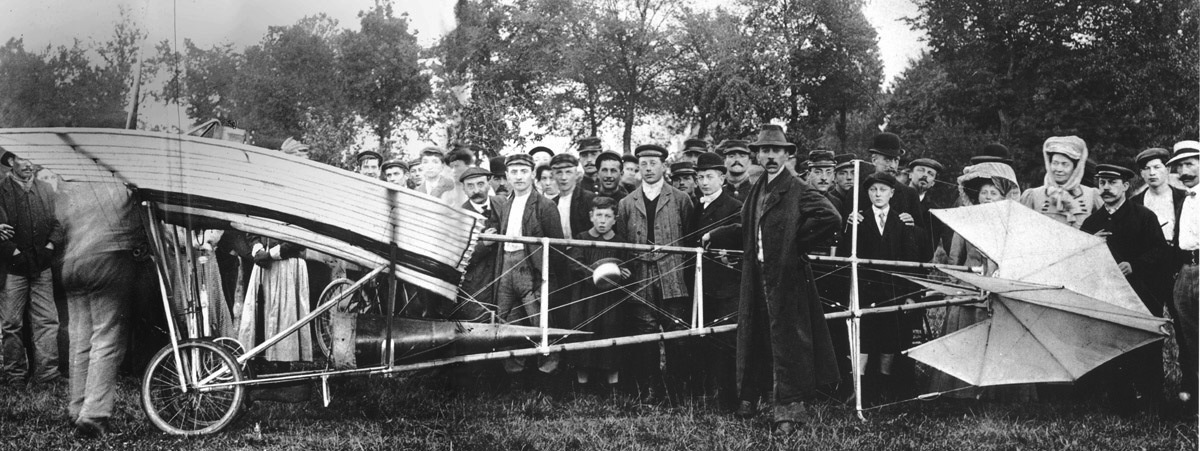
Crossing the English Channel is considered milestones in aviation today, be it by aircraft using solar energy, electricity or other ground-breaking technologies. The first celebrated such event in aviation, setting the trend occurred in the morning on 25th July 1909 when Louis Bleriot in his Bleriot XI monoplane flew across the English Channel (37 kilometres) in 36 minutes. On 12th June 1909, Blériot XII set a world record for carrying two passengers in an aircraft, one of whom was Santos-Dumont. Flying heavier than air machines was rapidly losing its novelty by this time. Several US, British, German, and other European aviators were building and flying aircraft by 1910.
The first passenger carried on an aircraft was Charles Furnas by Wilbur Wright on Flyer III on 14th May 1908. He was Wright’s friend and employee. This was in Kitty Hawk, US before two passengers were carried by Bleriot in 1909. The first purpose-built aircraft for passengers was probably the 4-engined Russky Vityaz built in Russia. It could carry 7 passengers with three crew. There was even a lavatory in the aircraft. A few weeks after the first flight on 10th May 1913, the aircraft was damaged due to an accident.
The First Airline
In Germany, DELAG had been founded in 1909 for passenger traffic, but it used airships not fixed-wing aircraft. The world’s first fixed wing airline service started operating amid great pomp on 1st January 1914 carrying a single passenger between St. Petersburg and Tampa, Florida—a distance of 34 kilometres. It used a two-seat seaplane. The airline, St. Petersburg-Tampa Airboat Line, was short-lived closing in a few months after the city’s subsidies stopped. However, it is the beginning of today’s airline business. The oldest three airlines still operating are KLM and Avianca (founded 1919) and Qantas (1920). The First World War started in mid 1914; it revolutionized air travel.
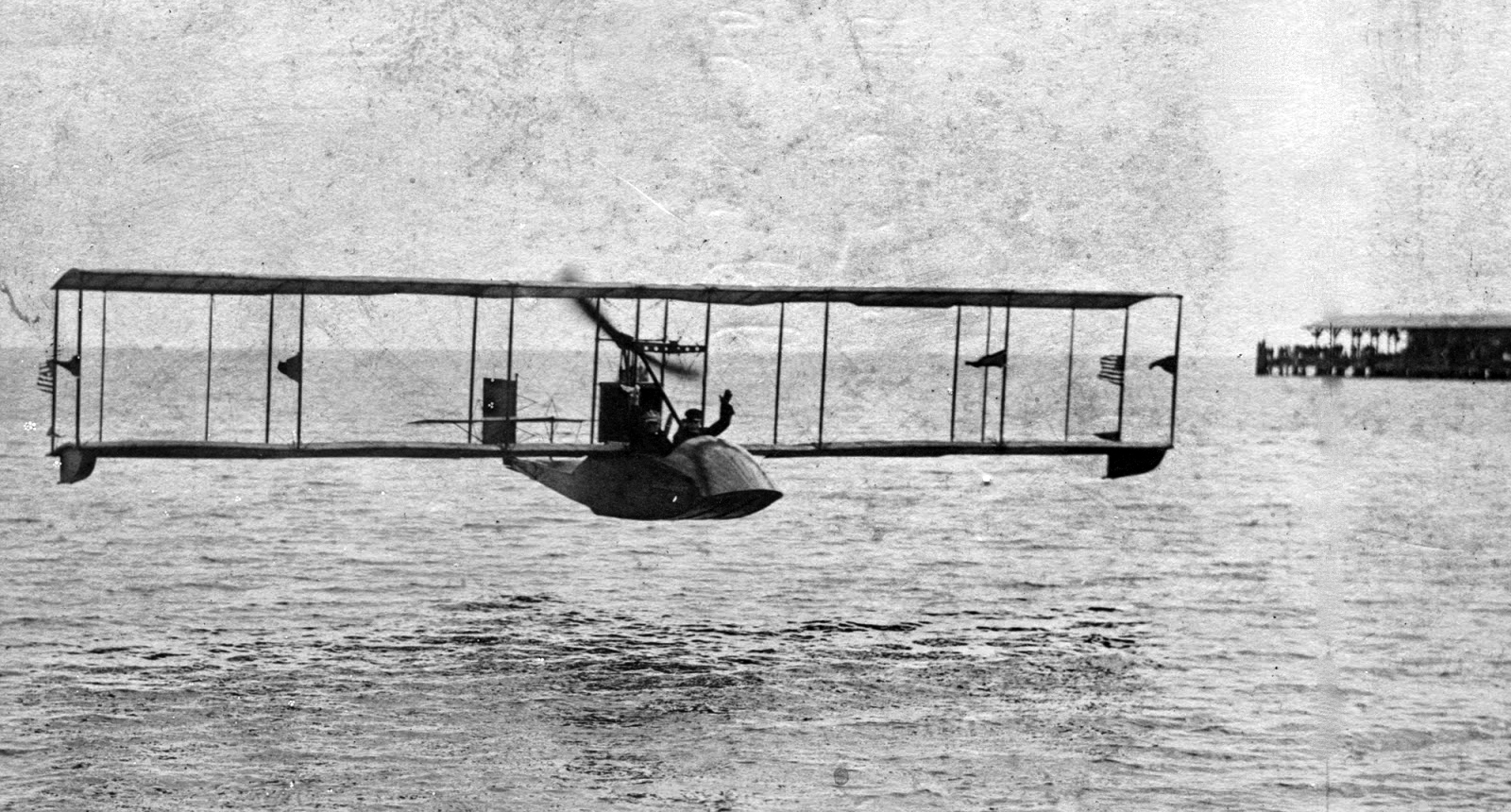
The first aircraft in Sri Lanka and the Maldives
In the early days of aviation, the range of aircraft was so short that they cannot be flown over. Thus, there was also a trend of enterprising men taking aircraft to various countries for exhibition for show and business. It was in this way that the first aircraft arrived in Sri Lanka.
The first aircraft, a Bléroit monoplane, was shipped on SS Rabefels by Englishman, Colin Browne. It arrived on 12th September 1911, about a decade after Gustave Whitehead first flew. He exhibited it in Colombo Racquet Club charging fees for viewing. The flight was to be in December. However, in December another entrepreneur, a German by the name of Franz Oster arrived in Ceylon aboard the Hamburg Amerika liner Silesia with an Etrich-Rumpler Taube (a dove-like aircraft) as ‘baggage’. On Christmas Day 1911, the Taube was flown not very controllably for the first time. Later flights of both the Taube and Bléroit were equally uncontrolled ending in damage to both aircraft. The first controlled flights in Sri Lanka is attributed to two visiting Frenchmen, Georges Verminck and Marc Pourpe and their two planes, both Bléroits. Starting on 7th December 1912, both of them made several flights for a number of weeks.
In mid-1914, the World War I started and raged on for four years. It was during the war that the Maldivians were to see the first aircraft. HCP Bell, the noted historian lists two events involving aircraft in his monograph: The Maldive Islands. The first one involves the British, and the second, the Germans. A German ship, “Wolf” had been raiding Allied shipping for sometime. Hearing about the ship being close to the Maldivian waters, the Royal Navy sent two ships, SS Raven II accompanied by a French vessel to search and destroy Wolf. Raven II was a seaplane carrier intended for aerial reconnaissance, observation and bombing. On 21st April 1917, the seaplane was hoisted out to conduct a reconnaissance flight between Male’ and Ari Atoll. Soon a storm sprang up and the seaplane failed to return. The carrier searched for the missing till 24th April and returned to Colombo. The two were considered missing and believed drowned. The incident as written by Bell is quoted below:
At an interview with the Sultan on April 22, 1917, Commander C.R. Samson H.M.S. “Raven,” and Captain Fernier of the French Cruiser “Pathan,” informed His Highness that on the previous evening, while these warships were lying between Ari and Male’ Atols, a British sea-plane which went up with two officers m (Lieutenants Abbot Meede and J. Madon Smith) had disappeared. Parties were despatched at once to make every search for the missing Officers over South Male’, Ari, Felidi, Mulaku and Nilande Atols.
Fishing boats of Fiyali and Biledu islands (N. Nilande Atol) picked up the Naval officers, from Filiteyo on April 23rd; to which island they had swum when the sea-plane fell into the sea.
The ’plane itself, discovered about 4 miles from Filiteyo, was landed in Fiyali island and taken charge by the Atolu-veri, or Chief Headman, of Nilande Atol, until British or French authorities could remove it.
The officers were sent in a Maldive doni to Male’ on April 27, and thence to Ceylon in the first bagala sailing for Colombo.
Actual account by the marooned crew (which was turned into a story) confirms that the seaplane did not fall from the sky; the crew lost their way as darkness fell and they landed near an island. The seaplane was a Shorts 184—a British two-seat reconnaissance, bombing and torpedo carrying folding-wing float plane with a 260 hp engine. It had a gross weight of 2433 kg and a wing span of 19.4 metres. In order to recover the plane, the crew would have gone to the island. Other reports note that a special hut was temporarily built for the aircraft in Male’ until it could be taken to Colombo. Several photographs of the incident are extant. Thus, the first aircraft the Maldivians had seen was a Shorts 184, and a bomber as that.
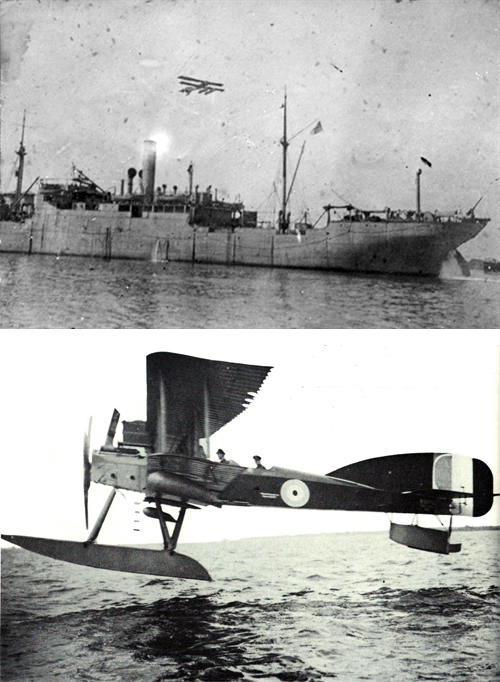
Interestingly, the second aircraft to have flown in the Maldives was a bomber and a seaplane. “In September-October, 1917, the German warship, “Wolf” lurked for some days in the southern atolls, reconnoitering by sea-plane…” noted the historian, HCP Bell. The seaplane mentioned was Freidrichshafen FF.33e, a two-seater named Wölfchen (Wolf Cub) by the crew. It was intended to provide Wolf’s Captain with a broader horizon over to locate ships to raid. The seaplane had a wing-span of 55 feet and a Benz 160 hp engine. It was during this voyage that the Japanese ship, Hitachi Maru, which had called on the Maldives, was spotted by Wolf and raided taking it as a prize ship. The captured ship was repaired and anchored at one of the Maldives’ islands.

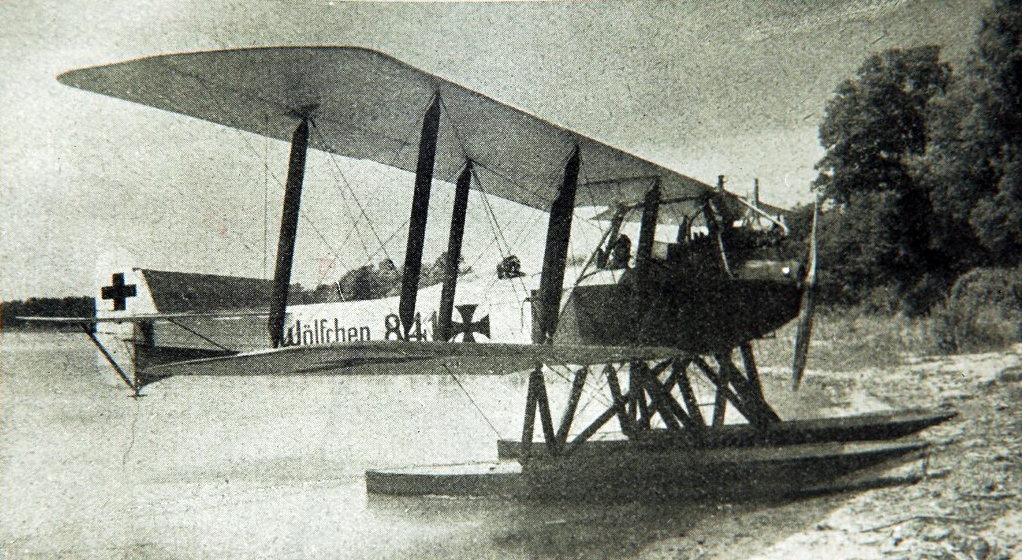
The second aircraft to have arrived in the Maldives was the German Freidrichshafen FF.33e on board the well-known German raider ship Wolf (shown above). The year was 1917.

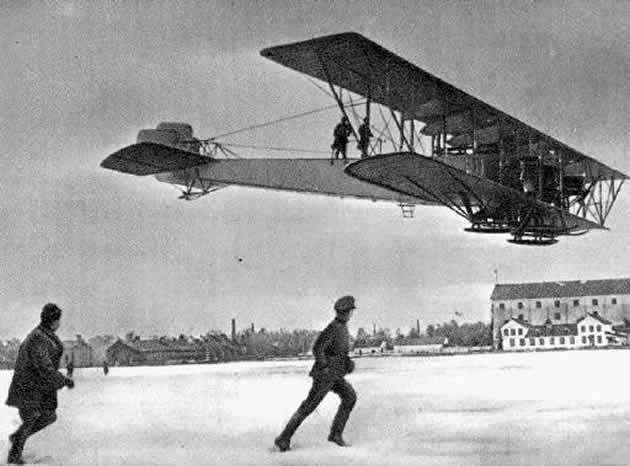

Really enjoy your website. Hope you will visit mine.